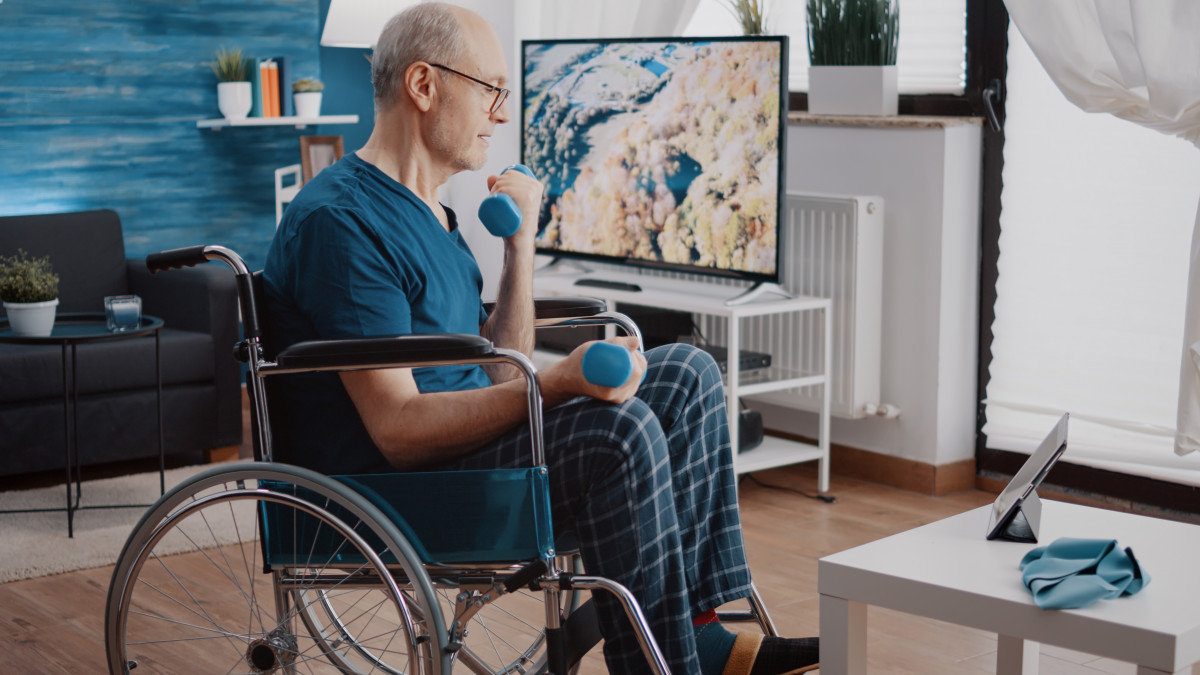Pilates, a renowned fitness method known for its focus on core strength, flexibility, and overall well-being, can be adapted to suit individuals with mobility challenges, including wheelchair users. In this comprehensive guide, we will explore how Pilates can empower wheelchair patients, offering valuable insights into the benefits, key principles, and practical exercises that promote mobility, strength, and a positive outlook on life.
Understanding the Benefits of Pilates for Wheelchair Patients
- Enhanced Core Strength: Pilates places a strong emphasis on core strength, and this is particularly beneficial for wheelchair patients. A strong core is essential for supporting the spine and improving posture.
- Increased Flexibility: Wheelchair users may experience muscle stiffness. Pilates incorporates stretching exercises that can enhance flexibility and joint mobility.
- Improved Posture: Wheelchair patients often face postural challenges. Pilates exercises can target postural muscles and promote a more upright and balanced posture.
- Stress Reduction: Pilates encourages mindfulness and body awareness. This can help reduce stress and promote mental clarity, which is essential for overall well-being.
- Better Range of Motion: Many Pilates exercises are designed to enhance the range of motion, making daily activities more manageable and reducing the risk of injury.
- Enhanced Mobility: Pilates exercises can improve muscle strength, leading to improved mobility and greater independence for wheelchair users.
Key Pilates Principles for Wheelchair Patients
Before delving into practical exercises, it’s important to understand the core principles of Pilates:
- Breathing: Deep, diaphragmatic breathing is fundamental in Pilates. Proper breathing techniques help with relaxation and mindful movement.
- Centering: The core is often referred to as the “powerhouse” in Pilates. Wheelchair patients can benefit from a strong core as it supports sitting posture and mobility.
- Concentration: Concentrating on each movement is a core aspect of Pilates. This helps wheelchair patients improve their mobility and strength with precision and control.
- Control: Controlled, deliberate movements are crucial in Pilates. This control not only enhances the effectiveness of exercises but also reduces the risk of injury.
- Precision: Precise execution of exercises ensures that the intended muscles are targeted, leading to improved strength and mobility.
- Flow: Pilates promotes fluid and efficient movement, enhancing overall mobility.
Practical Pilates Exercises for Wheelchair Patients
- Seated Arm Circles:
- Sit in your wheelchair with your feet flat on the ground.
- Extend your arms out to the sides at shoulder height.
- Begin making circular movements with your arms, first clockwise and then counterclockwise.
- This exercise promotes shoulder flexibility and strength.
- Seated Leg Lifts:
- Sit in your wheelchair with your feet on the ground.
- Lift one leg as high as you comfortably can while keeping your knee straight.
- Lower it back down.
- Repeat this with both legs to improve leg strength and flexibility.
- Seated Marching:
- Sit in your wheelchair with your feet on the ground.
- Lift one knee as high as you comfortably can while keeping the other foot on the ground.
- Lower it and lift the other knee.
- This exercise promotes hip mobility and strength.
- Seated Spinal Twist:
- Sit in your wheelchair with your feet flat on the ground.
- Hold the sides of your wheelchair’s seat for support.
- Twist your upper body to one side, holding for a few breaths, and then twist to the other side.
- This exercise enhances spinal mobility.
Incorporating Pilates into Your Routine
If you’re a wheelchair patient interested in integrating Pilates into your fitness routine, consider the following steps:
- Consult a Healthcare Professional: Before starting any new exercise program, especially if you have medical conditions or specific mobility challenges, consult with a healthcare professional or physical therapist.
- Find an Experienced Instructor: Look for a certified Pilates instructor with experience in adapting exercises for mobility-challenged individuals.
- Adapt as Needed: Pilates exercises can be adapted to your specific mobility and strength levels. Work with your instructor to customize your routine.
- Stay Consistent: Regular Pilates sessions are key to experiencing the full benefits. Aim for a schedule that works for you and your mobility needs.
Conclusion
Pilates is a versatile and adaptable fitness method that can empower wheelchair patients, promoting mobility, strength, and overall well-being. By focusing on core strength, flexibility, posture, and muscle control, Pilates offers a holistic approach to improving the quality of life for those with mobility challenges.
The decision to incorporate Pilates into your fitness routine is a personal one. Always consult with a healthcare professional, especially if you have pre-existing medical conditions, before starting any new exercise program. Embrace Pilates as a tool for empowerment and improved mobility, and embark on a journey to a healthier, more active you.
Discover more from Pilates All Ages
Subscribe to get the latest posts sent to your email.
